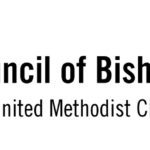By Rev. Susan Brims, East District Superintendent
“I’m just so tired of the same old-same old,” he said as we talked about the future of the church. When I asked what he meant, the man said that we have known for years that the church needed to move into a greater level of online engagement, but “we wouldn’t do it until the pandemic forced us to change.”
Forced us to change…
I’ve been reading Luther Smith’s book, Intimacy and Mission: Intentional Community as Crucible for Radical Discipleship. I read in the early pages of the book some of what I heard my colleague talk about when we discussed the nature of the church today. People tell me there is a great discontent with a church that exists merely to support an outdated institution. There is a feeling that the way we “do church” is no longer relevant for today’s society. And there is the deep concern that the church’s message has been co-opted by politics (on all sides) and this had led to a decline not only in church membership, but also in the impact of the church on the world around us.
Smith’s book examines several movements that led to the development of communities of faith, where people were determined to reclaim the message of love and faith and live it out in a radical way. One example that Smith lifts up is Koinonia Farms co-founded by Martin England and Clarence Jordon in (wait for it) 1942. (Yes, even then there was a desire for the rebirth of a radical community of faith, similar to what people are feeling today.) Koinonia Farms had three basic tenets:1
- First, there must be religious vision that is rooted in the biblical revelation of Jesus’ life and ministry. Such a vision clarifies God’s will for humanity and directs Christian commitment to become involved with humanity so that the kingdom of God is foreshadowed.
- Second, a fellowship that expresses the vision must be formed. Christian faith is best nurtured and made manifest in the context of a fellowship. A fellowship that embodies the vision also demonstrates to the world the meaning, purpose, and power of faith.
- Third, the Christ fellowship should encourage members to care for one another and for those who are outside the community. Christians, as disciples of Jesus, must endeavor to represent his work of comforting, reconciling, and liberating the poor and oppressed.
As I talk with pastors and church leaders, I hear in their hearts a cry for the church to reclaim what Jordon and England, and others, talk about in the book.
Through the pandemic we have learned that we are truly capable of making changes that need to be made. If the first step in this journey is to clearly identify core values, clearly state what we believe the identity of each local community of faith to be, then the second step is to prayerfully consider the call of Christ to be in community, not only with those in the church, but those just outside our doors.
In the gospel of Luke 10:25-37, we see a powerful encounter with a church leader and Jesus. At the center of the interaction is the question, “who is my neighbor?” The challenge that Jesus gives is this: the neighbor is someone in need, someone you may have ignored or walked past. The neighbor may even be someone you have turned your back on previously because of a variety of reasons.
The call to expand the reach and impact of community is loud today. We are called to end systemic racism. We are challenged to be instruments of hope and help for the poor, and disadvantaged. We are called to create a society that is equitable, just and loving for all of God’s people.
If you are ready to consider the second step in a journey to resiliency, renewal, and revitalization let me encourage you to have the following discussion:
- Study the demographics around your church – a 3-mile radius is a good goal. The Conference Office of New and Vital Faith and your Superintendent have access to Mission Insite, which has some meaningful information about who your neighbors are.
- Find other ways to get to know your neighbors. Get to know the people who actually live and work around the church. Consider what the needs of the people in the neighborhood are. One leadership group told me that their area around the church was a high crime area. We began to wonder what the needs of such a community might be.
- When you know who your neighbors are you will have a better idea of what their needs are, what brings them joy, or breaks their hearts. You will have a better understanding of what is needed to engage with the people in ways that are transformational.
- Once you have the needs of the neighborhood clearly identified, then engage in conversation with the people at your church, dreaming, praying, seeking God’s call about how you and the people of the church might be able to meet those needs.
The pandemic has taught us about the power of community, which is a gift our churches have to offer. Resiliency is experienced when we share the gifts God has given to us with those we do not yet know. New life is experienced when we move beyond our comfort zones to connect with God’s amazing people just beyond our doors. What do you think? Is this a journey for you, for your church, for your community?
I invite you to journey with me this Lent in reading Luther Smith’s book. I look forward to hearing your thoughts about what you learn as we read together.
Blessings and peace be with you,
Susan
1page 47 from Luther Smith’s Book, Intimacy and Mission: Intentional Community as Crucible for Radical Discipleship.





